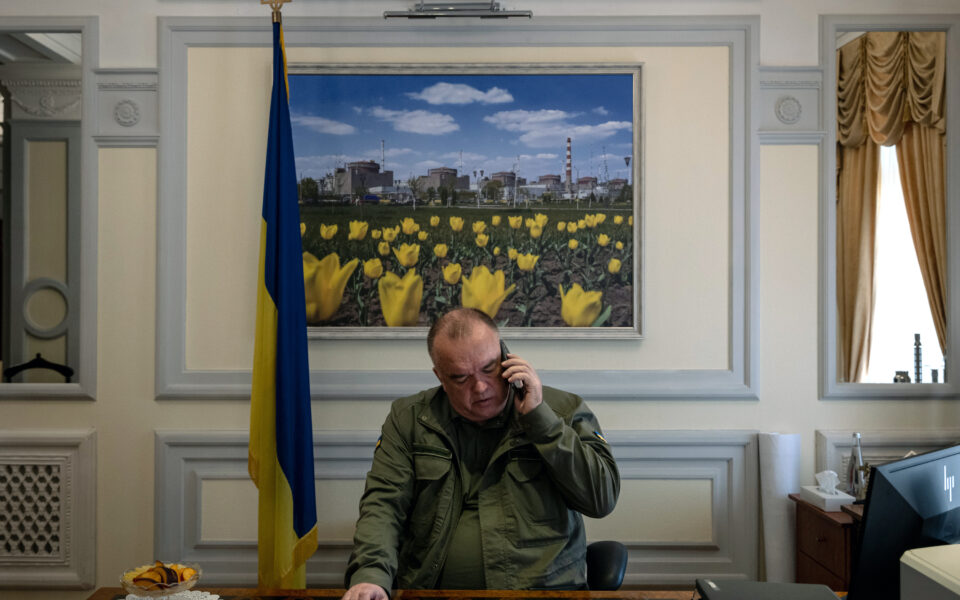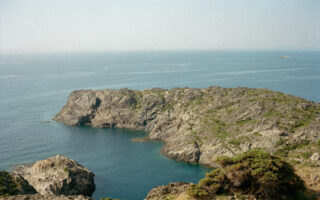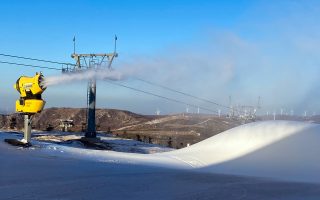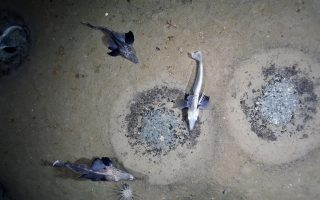Conditions at Zaporizhzhia nuclear plant get ‘worse and worse and worse’

Ukrainian engineers at the country’s largest nuclear power plant are relying on its one active reactor to run the station’s critical safety and cooling systems — a precarious stopgap measure that reflects the desperation of the moment, the head of the Ukrainian energy company said Thursday.
Petro Kotin, the head of the Ukrainian national energy company, Energoatom, said in an interview that while the emergency measure was known to the engineers and outlined in the technical documents, it has never been attempted for more than a few hours — and has already gone on for days.
The Zaporizhzhia Nuclear Power Plant has been using the measure since it was disconnected from external power Monday, leaving diesel generators as the last fail-safe, a risky situation in a war zone where fuel supplies could be compromised.
Reconnecting to external power requires spare parts, Kotin said, and workers are racing to bring them from Ukrainian-controlled territory, crossing the front line to reach the Russian-controlled station. Even so, Kotin said the “degradation” of the facility continued to grow “worse and worse and worse.”
A team of inspectors from the United Nations’ nuclear watchdog, the International Atomic Energy Agency, visited the plant last week and called for the creation of a safe zone around the facility. The team’s leader, Rafael Mariano Grossi, said his biggest concern was the station’s ability to rely on external power.
While the reactors themselves are designed to withstand a plane crash, power is needed for essential cooling systems that are much more vulnerable. And since Monday, the plant has been running in what is referred to as island mode, using one “hot” reactor pumping out 140 megawatts of power — less than half its normal generation — to provide energy for essential plant equipment.
Kotin said that the reactor’s technical specifications do not envision this mode being used for more than an hour.
Edwin Lyman, a nuclear power expert at the Union of Concerned Scientists, a private group in Cambridge, Massachusetts, said the situation was not unprecedented but was also not standard practice. The IAEA, which sets reactor safety standards for nuclear plants, published a technical document in 2018 that details the backup procedure, also known as “house load operation.”
Even plants that have the capability to run in island mode, the IAEA document noted, may face “a time limit, generally of a few hours.”
There are four high-voltage cables running from the plant to the Ukrainian grid and one lower-voltage backup line connected to a nearby fossil fuel plant. But artillery fire around the plant — Ukraine and Russia each blame the other for the continued shelling — has severed those connections, plus two more lines that run to a small on-site power plant.
On Aug. 25, the plant was completely cut off from external power for the first time in its history, briefly plunging it into blackout and forcing the emergency diesel generators to be switched on. Engineers raced to repair the lower-voltage reserve line and reconnected the plant to the grid 14 hours later.
On Monday, that reserve line was severed again. Kotin said engineers made the difficult decision to keep one reactor running to supply power to the plant rather than switching immediately to the generators.
“In normal conditions, I would say we should shut down all the reactors,” Kotin said.
Ukrainian officials fear they could be forced to cycle down the plant’s last running reactor anyway, because it was not designed to work this way indefinitely.
“The continued deterioration of the situation, the prolonged lack of power supply from an external source of electricity will force us to deploy standby diesel generators,” Oleh Korikov, the chair of the Ukrainian agency responsible for nuclear and radiation safety, said at a news conference.
There are 20 diesel generators at the plant with enough fuel to keep the cooling systems at all six reactors and the spent fuel pools running for 10 days. But they have not been tested to run for more than a day, and keeping them topped off with fuel could be a challenge.
“Four huge diesel fuel tanks are needed per day,” Korikov, said. “Potentially, we can find ourselves in a situation with no diesel fuel; it can give rise to an accident.”
Kotin said that was the worst-case scenario.
“These are the last defense before you have the melting of the core,” he said. If the station lost all power, he said, a meltdown could begin “within three hours, optimistically.”
[This article originally appeared in The New York Times.]






